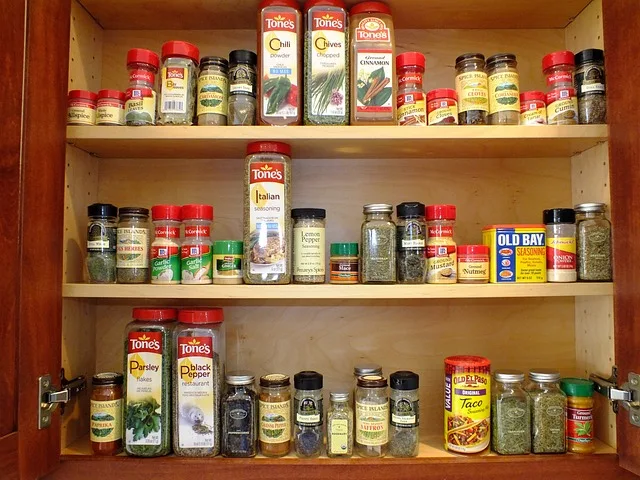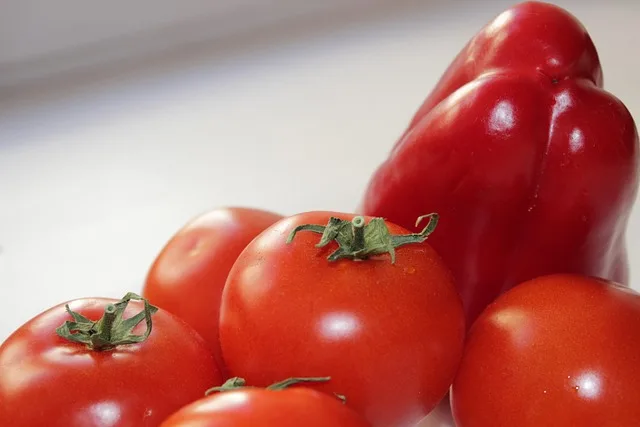First off, it’s essential to understand what Goo Gone is made of. This powerful cleaner contains solvents designed to break down sticky substances. While it works wonders on gunk, it can also be a bit of a wild card when it comes to painted surfaces. Think of it like a strong coffee—great for a pick-me-up, but too much can leave you jittery!
Now, if your cabinets are painted with a durable, high-quality finish, you might be in the clear. Many modern paints are designed to withstand a bit of scrubbing and solvent action. However, if your cabinets are coated with a more delicate finish, using Goo Gone could lead to some unsightly damage. Imagine trying to use a sledgehammer to crack a nut; it’s just not the right tool for the job!
Goo Gone vs. Painted Cabinets: The Ultimate Test of Finish Durability
Imagine you’ve just finished a DIY project, and your beautiful painted cabinets are gleaming in the light. But wait! A rogue sticker or a stubborn adhesive has decided to crash the party. You reach for Goo Gone, that magical potion that promises to dissolve the mess. But here’s the catch: will it also take a toll on your freshly painted surfaces?
Think of your cabinets as a delicate canvas. Just like an artist wouldn’t want to ruin their masterpiece with harsh chemicals, you don’t want to risk damaging your cabinets. Goo Gone is effective, but it’s essential to test it first. A small dab on an inconspicuous area can save you from a potential disaster. It’s like dipping your toe in the water before diving in—better safe than sorry!
Now, let’s talk about the finish. Painted cabinets often come with a protective layer, but not all finishes are created equal. Some are tough as nails, while others might be more sensitive. If your cabinets are coated with a high-quality polyurethane finish, they might withstand the Goo Gone test like a champ. However, if they’re painted with a softer finish, you could end up with a dull patch or worse—a stripped area that looks like it’s been through a battle.
So, before you unleash the power of Goo Gone on your painted cabinets, remember: a little caution goes a long way. It’s all about finding that sweet spot between cleaning and preserving your beautiful cabinetry.
Will Goo Gone Ruin Your Kitchen Cabinets? Experts Weigh In

First off, Goo Gone is a go-to for many when it comes to tackling stubborn stains, sticky labels, or gooey residues. But here’s the kicker: not all surfaces are created equal. Your kitchen cabinets, whether they’re wood, laminate, or painted, can react differently to this powerful solvent. Imagine using a sledgehammer to crack a nut—effective, but not always the best approach!
Experts recommend doing a patch test before going all in. Just like you wouldn’t dive into a pool without checking the water temperature, you should apply a small amount of Goo Gone in an inconspicuous area first. This way, you can see how your cabinets react without risking a full-blown disaster. If the finish starts to bubble or peel, it’s a clear sign to steer clear of that product.
Another tip? Always follow up with a gentle cleaner after using Goo Gone. Think of it as giving your cabinets a refreshing shower after a long day. This helps remove any residue left behind and keeps your cabinets looking their best.
The Truth About Goo Gone: Can It Safely Clean Painted Wood Cabinets?
First off, Goo Gone is a solvent designed to break down sticky residues, like tape or sticker goo. Imagine it as a superhero that swoops in to save the day, but with great power comes great responsibility. While it’s fantastic for removing tough gunk, it can be a bit too strong for painted surfaces. Think of it like using a sledgehammer to crack a nut—effective, but you might end up with more than you bargained for.
So, what’s the deal with painted wood cabinets? The paint can be delicate, and some formulations of Goo Gone might strip away that beautiful finish. It’s like trying to clean a fine silk shirt with bleach; you might end up with a disaster instead of a clean shirt. To play it safe, always do a patch test in an inconspicuous area first. If it passes the test, you’re golden!
Goo Gone: Friend or Foe? What Every Homeowner Should Know About Cabinet Care
Picture this: you’ve just finished a DIY project, and there’s a stubborn sticker residue clinging to your cabinet like an unwelcome guest. Enter Goo Gone, the superhero of adhesive removal. It’s designed to tackle everything from tape marks to crayon scribbles, making it seem like a miracle worker. But before you go spraying it everywhere, let’s pump the brakes for a second.
While Goo Gone can be a lifesaver, it’s essential to know that not all cabinets are created equal. If you’ve got painted or varnished surfaces, you might want to tread lightly. The solvents in Goo Gone can sometimes strip away that glossy finish, leaving your cabinets looking dull and sad. Think of it like using a sledgehammer to hang a picture—effective, but not always the best approach.
So, what’s the best way to use Goo Gone? Start by testing it on a small, inconspicuous area. This way, you can see how your cabinets react without risking a full-blown disaster. If all goes well, apply it gently with a soft cloth, and watch that residue disappear like magic. Just remember to follow up with a gentle soap and water rinse to remove any leftover goo.
Protecting Your Investment: How Goo Gone Affects Painted Kitchen Cabinets
Imagine this: you’ve just finished a delicious meal, and somehow, a rogue sauce has splattered all over your freshly painted cabinets. Panic sets in, right? But instead of reaching for harsh chemicals that could strip away that lovely paint, you grab Goo Gone. This magical potion is designed to tackle sticky situations without damaging your cabinets. It’s like having a superhero in a bottle!
Goo Gone works by breaking down the adhesive properties of sticky substances, making it easy to wipe away the mess. Just apply a small amount, let it sit for a minute, and watch as the grime practically melts away. It’s gentle enough for painted surfaces, so you don’t have to worry about ruining your hard work. Think of it as a protective shield that keeps your cabinets looking fresh and vibrant.
Cleaning Dilemma: Is Goo Gone Safe for Your Kitchen Cabinet Finish?
Imagine you’ve just finished a delicious meal, and somehow, a rogue sauce has splattered all over your beautiful cabinets. You reach for Goo Gone, that magical potion that promises to dissolve sticky residues like a charm. But hold on! Before you unleash it on your cabinets, you need to consider what your cabinet finish is made of.
Most kitchen cabinets are finished with either paint, varnish, or laminate. Goo Gone is generally safe on many surfaces, but it can be a bit of a wild card on certain finishes. Think of it like a strong coffee—great for a pick-me-up, but too much can leave you jittery! If your cabinets are painted or have a lacquer finish, using Goo Gone might strip away that glossy sheen, leaving you with a dull, sad surface.
So, what’s the best approach? Always do a patch test! Apply a small amount of Goo Gone in an inconspicuous area and see how it reacts. If it leaves your finish looking as good as new, you’re in the clear. If not, you might want to consider gentler alternatives like warm soapy water or a vinegar solution.

In the end, it’s all about protecting your investment. Your kitchen cabinets are the heart of your home, and you want them to shine like the stars they are. So, before you grab that bottle, think twice and choose wisely!
Goo Gone and Painted Cabinets: A Cautionary Tale for DIY Enthusiasts
Imagine this: you’ve just spent hours painting your cabinets, transforming your kitchen into a Pinterest-worthy paradise. You’re feeling like a DIY rockstar until you spill something sticky. In a moment of panic, you reach for Goo Gone, thinking it’s your saving grace. But wait! That seemingly harmless liquid can strip away your paint or leave behind unsightly streaks. It’s like trying to clean a delicate painting with a sledgehammer—definitely not the best approach!
So, what’s the alternative? Instead of risking your hard work, consider using a gentle soap and water solution. It’s like giving your cabinets a spa day instead of a demolition job. A soft cloth and a little elbow grease can go a long way in keeping your cabinets pristine without the risk of damage.
Frequently Asked Questions
Does Goo Gone Damage Painted Cabinet Finishes?
Goo Gone is generally safe for use on painted cabinet finishes, but it is advisable to test it on a small, inconspicuous area first. Prolonged exposure or excessive application may lead to damage or discoloration. Always follow the manufacturer’s instructions for best results.
What to Use Instead of Goo Gone on Painted Surfaces?
For removing sticky residues from painted surfaces, consider using alternatives like rubbing alcohol, vinegar, or a mixture of warm water and dish soap. Test any solution on a small, inconspicuous area first to ensure it does not damage the paint.
How Safe is Goo Gone for Kitchen Cabinets?
Goo Gone is generally safe for kitchen cabinets when used as directed. It effectively removes sticky residues without damaging most surfaces. However, it’s advisable to test a small, inconspicuous area first to ensure compatibility with your cabinet material. Always follow up with a gentle cleaner to remove any residue left by the product.
Can I Test Goo Gone on a Small Area First?
Testing Goo Gone on a small area first is recommended to ensure it does not damage the surface or alter its color. Apply a small amount in an inconspicuous spot, wait for a few minutes, and check for any adverse reactions before using it on larger areas.
What Are the Best Practices for Using Goo Gone on Cabinets?
To effectively use Goo Gone on cabinets, first test it on a small, inconspicuous area to ensure it doesn’t damage the finish. Apply a small amount of the product to a soft cloth and gently rub the stained area. Allow it to sit for a few minutes to break down the residue, then wipe clean with a damp cloth. Always follow up with a mild soap solution to remove any remaining product, and dry the surface thoroughly to prevent moisture damage.